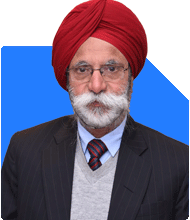I can invest 10,000 Per month for my retirement. Now my age is 27. Where should i invest?
Ans: Investing 10,000 rupees per month at the age of 27 for retirement is a wise decision. Starting early gives you a significant advantage due to the power of compounding. Here’s a structured approach to help you achieve your retirement goals.
Assessing Your Investment Goals
First, it’s essential to determine your retirement goals. Consider factors such as your desired retirement age, expected expenses, lifestyle, and inflation. These factors will guide your investment strategy.
Diversified Investment Approach
Given your long investment horizon, a diversified portfolio is crucial. This approach balances risk and maximizes returns. Here’s a recommended allocation:
Equity Mutual Funds
Equity mutual funds are ideal for long-term growth. They offer high returns by investing in stocks. You can consider a mix of large-cap, mid-cap, and flexi-cap funds for a balanced approach.
Large-Cap Funds:
These funds invest in well-established companies with stable returns.
Suitable for reducing overall portfolio volatility.
Mid-Cap and Flexi-Cap Funds:
These funds invest in mid-sized companies and offer higher growth potential.
Flexi-cap funds provide flexibility to move across market caps based on market conditions.
Systematic Investment Plan (SIP)
Investing through SIP in equity mutual funds is a disciplined approach. It averages out the cost of purchase, reduces market timing risks, and leverages the power of compounding.
Suggested Allocation
Large-Cap Fund: 3,000 rupees per month
Mid-Cap Fund: 2,000 rupees per month
Flexi-Cap Fund: 3,000 rupees per month
Debt Funds
Debt funds provide stability and lower risk compared to equity funds. They invest in fixed-income securities like bonds and treasury bills. A small portion of your portfolio in debt funds can reduce overall risk.
Debt Fund: 2,000 rupees per month
Balanced Funds
Balanced funds or hybrid funds invest in a mix of equity and debt. They offer a balanced approach, providing growth and stability. This can be a part of your portfolio for moderate risk and returns.
Balanced Fund: As part of the debt and equity allocation mentioned above.
Reviewing and Adjusting Your Portfolio
Regularly review your portfolio to ensure it aligns with your goals. Market conditions and personal circumstances change, so periodic adjustments are necessary.
Emergency Fund and Insurance
While focusing on investments, ensure you have an emergency fund and adequate insurance coverage. An emergency fund should cover 6-12 months of expenses. Health and life insurance protect you and your family, ensuring financial security during unforeseen events.
Benefits of Professional Guidance
Consider working with a Certified Financial Planner (CFP). A CFP can provide personalized advice, helping you choose the right funds and adjust your strategy based on market changes and life events.
Avoid Direct Funds and Index Funds
Direct funds might seem cost-effective but lack professional advice, which is crucial for maximizing returns and managing risk. Index funds track the market and do not aim to outperform it. Actively managed funds, guided by a CFP, offer better potential for higher returns.
Conclusion
Starting early with a disciplined investment approach will help you build a substantial retirement corpus. Diversifying across equity, debt, and balanced funds, combined with regular reviews and professional guidance, ensures you stay on track to achieve your retirement goals.
Best Regards,
K. Ramalingam, MBA, CFP,
Chief Financial Planner,
www.holisticinvestment.in











.jpg)















